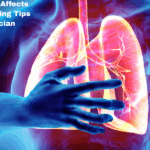
Pulmonary rehabilitation plays a pivotal role in managing various pulmonary diseases, offering a lifeline to individuals facing respiratory challenges. In this blog post, we’ll explore the crucial role of exercise in pulmonary rehabilitation and gain insights from Dr. Yogesh Agrawal, a distinguished pulmonologist based in Wakad, Pune, known for his expertise in pulmonology.
The Importance of Exercise in Pulmonary Rehabilitation:
Exercise is not merely a physical activity; it becomes a lifeline for individuals grappling with pulmonary diseases. Engaging in regular exercise helps improve lung function, enhance respiratory muscle strength, and increase overall endurance. The benefits extend beyond the physical, positively impacting mental well-being and reducing symptoms associated with pulmonary conditions.
Tailoring Exercise Routines for Pulmonary Conditions:
The key to successful pulmonary rehabilitation lies in customizing exercise routines to accommodate the specific needs and limitations of individuals with pulmonary diseases. Low-impact exercises, such as walking, swimming, and stationary cycling, prove to be effective without putting excessive strain on the respiratory system. Strength training exercises targeting core muscles also play a vital role in supporting respiratory function.
Cardiovascular Benefits of Exercise:
Aerobic exercises are particularly beneficial for individuals undergoing pulmonary rehabilitation. These activities, ranging from brisk walking to jogging, contribute to improved cardiovascular health. As the heart becomes more efficient at pumping blood, the entire circulatory system functions more effectively, delivering oxygen to the body’s tissues and organs, including the lungs.
Breathing Techniques and Exercise:
Incorporating proper breathing techniques is essential during exercise for individuals with pulmonary diseases. Techniques such as pursed-lip breathing and diaphragmatic breathing help optimize oxygen exchange, reduce breathlessness, and enhance overall respiratory efficiency. These practices empower individuals to engage in physical activities with greater comfort and confidence.
Overcoming Barriers to Exercise:
While the benefits of exercise are clear, individuals with pulmonary diseases often face barriers such as fear of breathlessness or uncertainty about appropriate activities. Addressing these concerns through education, personalized guidance, and gradual progression in exercise intensity can significantly contribute to breaking down these barriers, encouraging a more active lifestyle.
Monitoring Progress and Adjusting Exercise Plans:
Regular monitoring of individuals in pulmonary rehabilitation is crucial to track progress and make necessary adjustments to exercise plans. This may involve reassessing fitness levels, modifying exercise intensity, or introducing new activities to continually challenge and improve respiratory function.
Conclusion:
As we explore the vital connection between exercise and pulmonary rehabilitation, we gain valuable insights from Dr. Yogesh Agrawal, the best pulmonologist in Wakad, Pune. His commitment to individualized care and expertise in pulmonology underscores the transformative potential of exercise in enhancing lung function, endurance, and overall well-being for individuals affected by pulmonary diseases. Dr. Yogesh Agrawal’s dedication to pulmonary health exemplifies how personalized exercise regimens can not only breathe life back into lungs but also inspire lasting positive changes in the lives of those seeking to reclaim control over their respiratory well-being.




